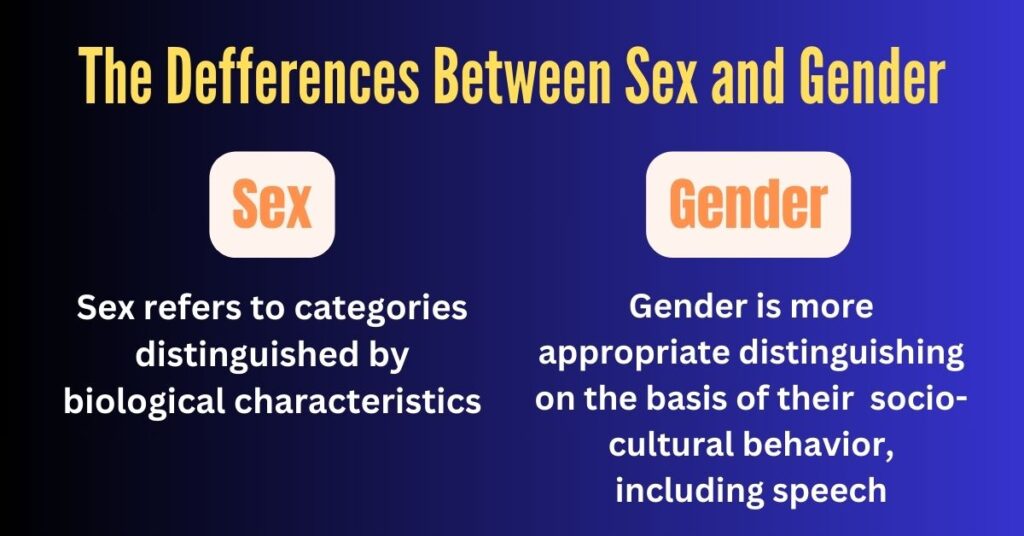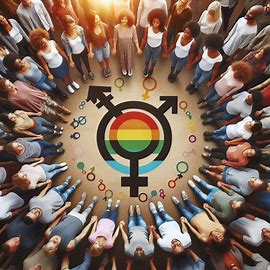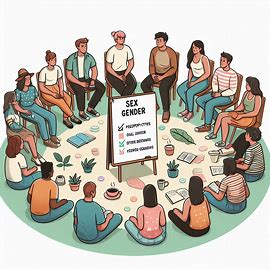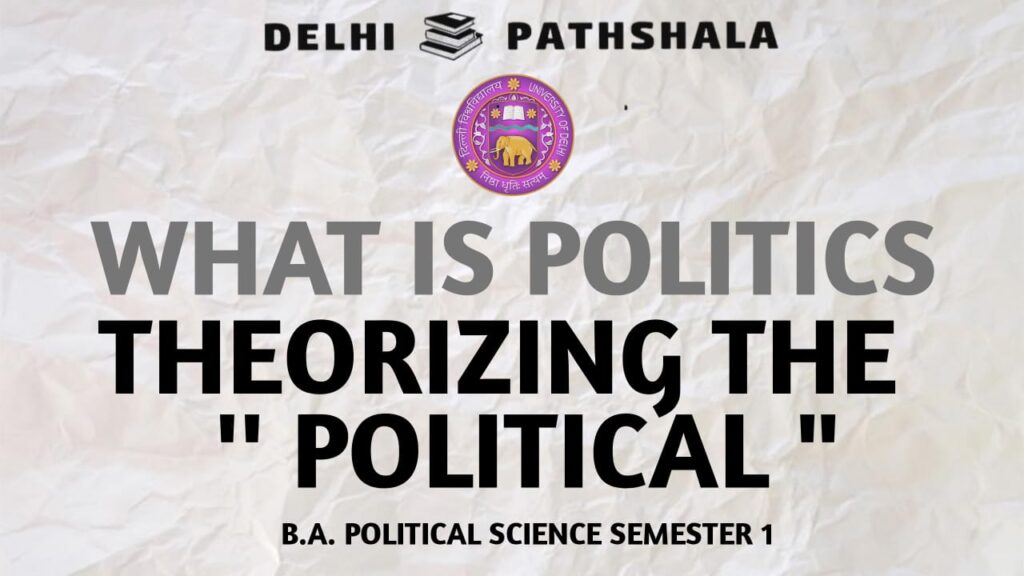The Relationship and Difference Between Sex and Gender

Difference Between Sex and Gender :
Sex and gender are distinct concepts that are often used interchangeably but refer to different aspects of identity and biology. Understanding the difference between sex and gender is crucial for discussions related to identity, equality, and social roles. Here are detailed explanations of each term:
What is Sex? :
Biological Aspect:

- Chromosomes: Sex is often assigned at birth based on biological characteristics such as chromosomes. Typically, individuals with XX chromosomes are assigned female, and those with XY chromosomes are assigned male.
- Reproductive Organs: Another biological aspect includes the presence of reproductive organs. Females usually have ovaries, and males have testes.
Secondary Sexual Characteristics:
- Hormones: During puberty, sex hormones (estrogen and testosterone) contribute to the development of secondary sexual characteristics. Examples include breast development in females and facial hair growth in males.
Binary Classification:
- Traditionally: Society has often classified sex in a binary manner—male or female. However, it’s essential to note that not all individuals fit neatly into these categories, and there is natural biological variation.
What is Gender? :

Social and Cultural Aspect:
- Roles and Expectations: Gender refers to the roles, behaviors, activities, expectations, and societal norms associated with being male or female in a particular culture or society.
- Cultural Variability: Gender roles can vary significantly across cultures and change over time within a society.
Identity:
- Personal Sense: Gender identity is an individual’s personal sense of their own gender, which may or may not align with the sex assigned at birth. This identity can be male, female, both, neither, or a fluid combination.
Spectrum:
- Non-Binary and Genderqueer: Recognizing that gender exists on a spectrum, some people identify as non-binary or genderqueer, meaning they do not exclusively identify as male or female.
Relationship Between Sex and Gender:
- Not Always Aligned:
- Cisgender and Transgender: While many people’s gender identity aligns with their assigned sex (cisgender), some individuals identify with a gender different from their assigned sex at birth (transgender).
- Intersectionality:
- Influences: Both sex and gender can intersect with other aspects of identity, such as race, ethnicity, and socioeconomic status, shaping a person’s experiences and opportunities.
- Dynamic and Fluid:
- Fluidity: Both sex and gender can be fluid concepts. Individuals may experience changes in gender identity over time, and societal understandings of gender are evolving.
Understanding the difference between sex and gender is crucial for fostering inclusivity, recognizing diversity, and addressing issues related to discrimination and inequality. It is important to respect individuals’ self-identified gender and promote a society that values diversity and supports the rights and well-being of everyone, regardless of their sex or gender identity.
The Social Construction of Gender Roles and Identities

The social construction of gender refers to the way society shapes and reinforces expectations, roles, behaviors, and identities associated with being male or female. Unlike sex, which is often considered a biological concept, gender is largely a social and cultural construct. Here are full details on the social construction of gender roles and identities:
1. Socialization:
- Early Childhood: From birth, individuals are socialized into gender roles through various agents, including family, peers, media, and education.
- Toys and Clothing: Children are often exposed to gender-specific toys, clothing, and activities, reinforcing stereotypical expectations. For example, girls are given dolls, and boys are given trucks.
2. Cultural Norms and Values:
- Cultural Variability: Gender roles are culturally and socially specific, varying across different societies and historical periods.
- Norms and Values: Societal norms and values shape expectations regarding how individuals of different genders should behave, dress, and interact.
3. Media and Popular Culture:
- Portrayals: Media plays a significant role in shaping and reinforcing gender norms through portrayals in advertising, movies, TV shows, and other forms of entertainment.
- Stereotypes: Gender stereotypes in media can contribute to the perpetuation of narrow and limiting expectations for individuals.
4. Institutional Influences:
- Education: Schools often reinforce gender norms through curricula, textbooks, and classroom expectations, influencing how students perceive their roles.
- Workplace: Gender roles can be reinforced in the workplace through expectations related to job roles, leadership positions, and professional behavior.
5. Language and Discourse:
- Gendered Language: Language can reflect and perpetuate gender roles. For example, certain professions may be associated with specific gendered terms (e.g., “fireman” or “stewardess”).
- Discourse: Social conversations and discourse can contribute to the construction of gender norms and expectations.
6. Intersectionality:
- Overlap with Other Identities: Gender intersects with other aspects of identity, such as race, class, and sexuality, shaping a person’s experiences and the expectations placed upon them.
7. Resistance and Change:
- Challenges to Norms: Activism and social movements challenge traditional gender norms, advocating for inclusivity and equal opportunities for individuals of all gender identities.
- Changing Perceptions: Evolving societal attitudes contribute to the redefinition of traditional gender roles and the acceptance of diverse gender identities.
8. Impact on Mental Health:
- Conformity Pressure: The pressure to conform to traditional gender roles can impact mental health. Individuals may experience stress or discrimination if their gender identity or expression does not align with societal expectations.
9. Global Perspectives:
- Cross-Cultural Variances: Different cultures have unique approaches to gender roles, and globalization can influence the spread of certain norms while challenging others.
10. Legal and Policy Implications:
- Equal Rights: Legal and policy frameworks play a crucial role in challenging discriminatory practices and promoting equal rights and opportunities for individuals regardless of gender.
Understanding the social construction of gender is essential for fostering a more inclusive and equitable society. Recognizing and challenging restrictive gender norms can contribute to creating environments where individuals feel free to express their gender identity authentically and where everyone has equal opportunities and rights.
Sex and Gander debates: A Critical Analysis

In the context of sex and gender debates, the critiques of biological determinism and essentialism become particularly relevant and significant. The sex and gender debates focus on the interplay between biological sex (which is often considered a binary concept of male and female) and gender (which encompasses a spectrum of identities beyond the binary). Here are detailed critiques specific to the sex and gender debates:
1. Binary Conception of Sex:
- Oversimplification: Biological determinism often perpetuates a binary and oversimplified view of sex as strictly male or female, neglecting the biological diversity and intersex variations that exist.
2. Gender Essentialism:
- Stigmatization of Nonconformity: Essentialist views on gender may stigmatize individuals whose gender identity or expression deviates from traditional norms, reinforcing harmful stereotypes and discrimination.
3. Neglect of Gender Identity:
- Exclusive Focus on Biology: Biological determinism may neglect the crucial role of gender identity—the deeply-felt internal sense of being male, female, or non-binary—in shaping a person’s experience and self-concept.
4. Social Construction of Gender:
- Ignoring Cultural and Social Factors: Critics argue that biological determinism and essentialism often downplay the social and cultural construction of gender roles, norms, and expectations, which are not solely determined by biology.
5. Intersectionality:
- Neglecting Intersectional Identities: Both biological determinism and essentialism may overlook the intersectionality of gender with other aspects of identity (race, ethnicity, class, etc.), neglecting the diverse experiences of individuals.
6. Influence on Policies and Laws:
- Discriminatory Implications: When biological determinism is applied to policies and laws, it may lead to discriminatory practices, particularly against transgender and non-binary individuals who do not conform to binary notions of sex and gender.
7. Disregard for Gender Diversity:
- Limiting Gender Expression: Essentialist perspectives may limit the understanding and acceptance of diverse gender expressions and identities, contributing to the marginalization of those who do not conform to traditional norms.
8. Impact on Mental Health:
- Stigma and Discrimination: Essentialist views may contribute to the stigmatization and discrimination faced by individuals whose gender identity or expression challenges established norms, negatively impacting their mental health and well-being.
9. Eroding Autonomy and Agency:
- Limited Self-Determination: Both biological determinism and essentialism may erode the autonomy and agency of individuals by suggesting that their gender roles and identities are predetermined by biological factors rather than being self-determined.
10. Promotion of Inequality:
- Reinforcement of Power Dynamics: Essentialist views can reinforce power dynamics, contributing to the perpetuation of gender inequalities and limiting efforts to achieve gender justice and equality.
11. Advancements in Scientific Understanding:
- Dynamic Nature of Biological Factors: As scientific understanding advances, critics argue for a more nuanced appreciation of the dynamic nature of biological factors and their interaction with environmental and social influences.
12. Promotion of Inclusivity:
- Acknowledging Diverse Experiences: Critics emphasize the importance of moving beyond rigid biological determinism and essentialism to acknowledge and respect the diverse experiences and identities within the spectrum of sex and gender.
13. Legal and Policy Considerations:
- Rights and Protections: Advocates for gender inclusivity argue for legal and policy frameworks that recognize and protect the rights of individuals across the spectrum of gender identities, challenging essentialist notions.
In the sex and gender debates, these critiques highlight the need for a more comprehensive and inclusive understanding of sex and gender that considers the complexities of identity, the impact of social and cultural factors, and the importance of promoting equality and respect for all individuals, regardless of their sex or gender identity.
The diversity and intersectionality of gender experiences and perspectives
The sex and gender debates have increasingly recognized the diversity and intersectionality of gender experiences and perspectives. It is crucial to move beyond binary and essentialist notions and acknowledge that gender is a complex, multifaceted aspect of identity shaped by various intersecting factors. Here are detailed insights into the diversity and intersectionality of gender experiences in the context of sex and gender debates:
1. Gender as a Spectrum:
- Non-Binary Identities: Acknowledging that gender exists on a spectrum beyond the binary of male and female, individuals may identify as non-binary, genderqueer, genderfluid, or agender.
2. Cultural and Regional Variations:
- Cultural Influences: Gender experiences are influenced by cultural norms and traditions, with varying expectations for masculinity and femininity across different societies.
- Global Perspectives: Recognizing that gender norms are not universal, the sex and gender debates consider diverse cultural perspectives on gender roles and expressions.
3. Intersectionality:
- Overlapping Identities: Intersectionality emphasizes the overlap of different social identities, such as race, ethnicity, sexual orientation, and socioeconomic status, with gender. This intersectionality shapes unique experiences and challenges.
4. Gender Expression and Presentation:
- Fluidity in Expression: Gender expression is fluid and varies widely. Individuals may express their gender in ways that challenge traditional norms, encompassing a spectrum of styles, clothing choices, and behaviors.
5. Biological Diversity:
- Intersex Identities: Recognizing the biological diversity of sex, intersex individuals challenge the binary understanding of male and female, highlighting the importance of acknowledging and respecting diverse biological experiences.
6. Transgender and Gender Identity:
- Transgender Experiences: Transgender individuals experience a gender identity that does not align with the sex assigned at birth. Understanding and validating transgender experiences are crucial aspects of the sex and gender debates.
7. Gender Roles and Expectations:
- Challenges to Norms: The debates underscore the need to challenge rigid gender roles and expectations, allowing individuals the freedom to express their gender authentically.
8. Historical and Temporal Changes:
- Evolution of Definitions: Recognizing that definitions and understandings of gender roles and identities evolve over time, the debates consider historical and temporal changes in societal attitudes.
9. Social and Economic Impacts:
- Inequities and Discrimination: The intersectionality of gender with other social categories contributes to inequities and discrimination. Women of color, for example, may face unique challenges that result from the intersection of race and gender.
10. Sexuality and Gender:
- Diverse Relationships: The debates explore the intersections between gender identity and sexual orientation, recognizing that experiences of gender are intimately tied to one’s sexual identity and relationships.
11. Legal Recognition and Protections:
- Inclusive Policies: Advocates for inclusivity in the sex and gender debates emphasize the importance of legal recognition and protection for individuals of all gender identities, fostering a more equitable and just society.
12. Mental Health Considerations:
- Intersectionality and Well-being: Recognizing how intersectionality impacts mental health, the debates emphasize the need for inclusive and affirming spaces that consider the unique challenges faced by individuals with intersecting identities.
13. Activism and Advocacy:
- Diverse Voices: Activism within the sex and gender debates involves amplifying diverse voices and perspectives, ensuring that the movement reflects the full spectrum of gender experiences.
14. Education and Awareness:
- Promoting Understanding: Addressing the diversity of gender experiences requires ongoing education and awareness efforts to promote understanding, empathy, and acceptance.
15. Media Representation:
- Diverse Narratives: Advocates emphasize the importance of diverse and authentic representation in media to challenge stereotypes and provide positive role models for individuals with varied gender identities.
In conclusion, recognizing the diversity and intersectionality of gender experiences and perspectives is essential for fostering inclusivity, understanding, and respect within the sex and gender debates. It encourages a more nuanced understanding of gender that embraces the complexity of individual identities and challenges societal norms and expectations.


